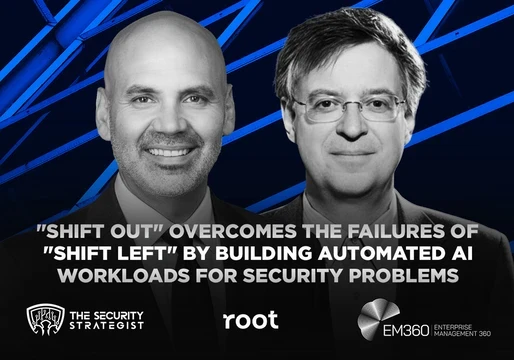For years, I've watched IT security professionals cling to outdated defensive strategies. They're building digital fortresses while the world has already moved to a completely distributed model of work and technology.
The statistics paint a clear picture. Recent data from Gartner reveals that seven out of ten knowledge workers operate remotely at least one day per week. This isn't a temporary shift—it's our permanent reality. Meanwhile, Flexera's 2024 cloud study shows that 85% of organizations now utilize multiple cloud platforms.
The traditional network boundary we once relied on? It's been completely dismantled.
The conventional approach has failed. Full stop.

How We Lost Control of Our Security Boundaries
There was a time when network security made perfect sense. You maintained an internal system, deployed a firewall, and treated everything beyond that barrier as hostile territory. It was logical, organized, and it worked.
Those days are over.
Today's business environment bears no resemblance to the orderly corporate networks of the early 2010s. Software-as-a-Service platforms multiply faster than we can catalog them. Application programming interfaces link every system to every other system. Employee devices connect to sensitive company information from internet cafes across the globe. Computing power gets distributed to remote locations that weren't even on our radar before.
The security perimeter didn't just grow—it completely fragmented. Security experts now talk about "micro-perimeters," where every application, device, and data store requires its own defensive approach. Traditional firewalls have become as obsolete as fax machines in this landscape.
Here's what's fascinating: Forward-thinking companies started developing these scattered security frameworks long before the industry created official terminology for it. They connected their user authentication systems with device management tools, exchanged threat data between cloud and local environments, and moved policy enforcement closer to where data actually lived. This evolution happened naturally because the old methods had become completely inadequate.
Industry analysts eventually caught up and labeled it "Cybersecurity Mesh Architecture"—giving a formal name to what creative security teams had already been building through necessity and experimentation.
A Revolutionary Security Framework for Modern Business
Picture this scenario: rather than attempting to shield your entire digital ecosystem with a single massive barrier, you integrate sophisticated security measures directly into every component of your technology infrastructure. It's a decentralized, adaptive framework designed to mirror how contemporary organizations actually function.
This concept defines Cybersecurity Mesh Architecture (CSMA). It represents a fundamental change in perspective, grounded in four core principles that upend traditional security thinking:
1. User Identity as the Foundation
Contemporary security begins with identity verification. People, devices, and software must continuously prove their legitimacy—not merely during initial access.
Current systems evaluate behavior patterns, device condition, geographic location, and access timing continuously. When someone logs in during off-hours from an unfamiliar device and attempts to reach confidential information, the system raises alerts and requires additional verification steps.
This embodies genuine zero-trust principles—not marketing language, but the actual foundation of secure modern systems.
2. Distributed Protection Strategy
Rather than funneling all traffic through a single control point, CSMA distributes security throughout your entire environment.
Your workstation operates independent threat detection.
Your cloud repositories encrypt content and monitor for suspicious behavior.
Mobile applications authenticate users and verify data authenticity locally.
Every element of your technology ecosystem becomes an active defensive layer—not just a passive policy recipient.
3. Adaptive Intelligence Networks
CSMA frameworks exchange information instantaneously. When one system component identifies an anomaly, the entire network receives immediate notification.
This continuous communication establishes an intelligent security environment—one that grows with emerging threats and adjusts automatically.
4. Unified Integration Over Isolation
Through standardized interfaces, your security tools collaborate seamlessly instead of operating independently.
Your authentication system can update your endpoint security, which transmits data to your security monitoring platform, which then guides your response procedures.
This goes beyond simple integration—it's true orchestration, transforming separate tools into a coordinated, proactive defense network.
Proven Results from Real Implementations
The evidence speaks for itself. Organizations deploying mesh architectures have progressed far beyond experimental phases—they're recording tangible improvements in their security performance metrics.
Gartner's 2022 research documented a 25% decrease in financial losses from security breaches among organizations that adopted CSMA early. For major enterprises, this translates to millions of dollars in prevented damage. The response time improvements may be even more valuable. When your threat detection identifies malicious software, it instantly notifies your network monitoring systems, identity management platform, and response team simultaneously. No manual transfers. No waiting while staff manually share alerts between platforms. The complete security infrastructure operates as one coordinated system.
The efficiency gains from tool consolidation are substantial. Rather than juggling dozens of separate security products, organizations build integrated architectures where all components work in harmony. Reduced complexity, improved visibility, stronger protection.
Current Market Solutions
This technology isn't theoretical or academic anymore. Leading vendors are delivering fully functional mesh solutions today.
IBM's QRadar Suite demonstrates mesh principles by combining extended detection and response, security information and event management, and security orchestration into one unified platform that maintains context across all elements. Microsoft Entra (formerly Azure Active Directory) applies identity-focused policies that perfectly match mesh architecture concepts. Both Palo Alto Networks and Cisco are updating their advanced firewalls and zero-trust systems with built-in mesh functionality.
These companies aren't conducting experiments. They're securing Fortune 500 organizations with mesh-based security frameworks right now.
Building Your Mesh Architecture: A Step-by-Step Approach
Avoid attempting to overhaul your complete security infrastructure in one massive project. A successful cybersecurity mesh transition starts with thoroughly understanding your existing capabilities.
Begin by cataloging your current security solutions, focusing especially on their integration potential. Tools without robust interface support or limited data sharing capabilities could become vulnerabilities in your mesh strategy. Older systems that function in isolation can reduce visibility and create obstacles throughout your security environment.
Then, establish identity as your security foundation. This requires more than just implementing new technology—it demands shifting your team's entire approach. Security must move away from network-focused thinking. Your organization needs to embrace an identity-centered philosophy, which might mean additional training, process changes, and completely rethinking how access permissions work.
You'll also need powerful analytics infrastructure. Whether built internally or purchased from established vendors, these systems must collect and analyze information from your entire technology stack. Consider them the command center of your security mesh—removing unnecessary noise, identifying patterns, and activating intelligent responses. Without this capability, you risk drowning in data that provides minimal useful intelligence.
Finally, plan every new addition with flexibility in mind. Every tool joining your environment should be designed for integration and built to connect smoothly with the broader architecture. In a mesh setup, connectivity isn't optional—it's absolutely essential. Prioritizing compatibility from the start ensures growth potential and long-term stability.
The Urgency of This Transformation
Cybersecurity Mesh Architecture represents more than industry jargon or vendor marketing. It's a logical, strategic answer to how enterprise technology actually works today. Infrastructure spans multiple cloud platforms and edge locations, workforces operate remotely, and cyber threats have become increasingly sophisticated.
Traditional boundary-focused defenses cannot protect what they cannot see or manage effectively.
The solution isn't constructing better walls—it's integrating intelligent, flexible security throughout every organizational layer. It's security built into your operations from the ground up, not added as an afterthought.
Your digital transformation created this distributed environment. Your security strategy must evolve to match it.
Curious about practical implementation? Custom architectural blueprints that connect mesh concepts to your current infrastructure can transform theoretical ideas into actionable plans. Visual documentation often proves essential when presenting these changes to executive teams and securing funding for transformation project







Comments ( 0 )